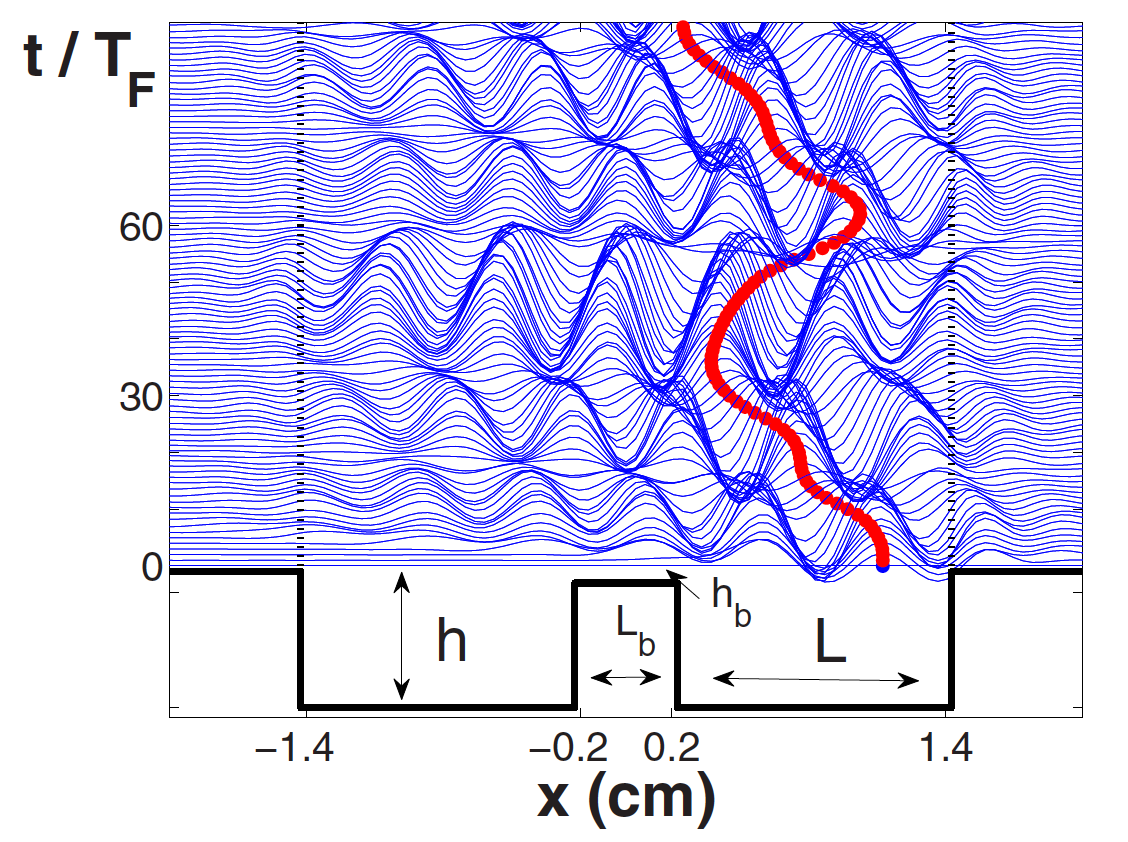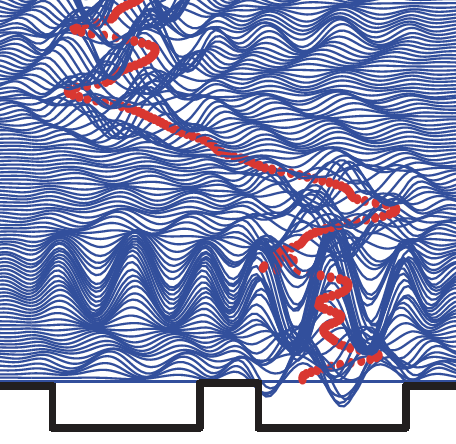
Eddi et al. (2009) presented experimental results demonstrating the unpredictable tunneling of a classical wave-particle association as may arise when a droplet walking across the surface of a vibrating fluid bath approaches a submerged barrier. We here present a theoretical model that captures the influence of bottom topography on this wave-particle association and so enables us to investigate its interaction with barriers. The coupledwave-droplet dynamics results in unpredictable tunneling events. As reported in the experiments by Eddi et al. and as is the case in quantum tunneling [Gamow, Nature (London) 122, 805 (1928)], the predicted tunneling probability decreases exponentially with increasing barrier width. In the parameter regimes examined, tunneling between two cavities suggests an underlying stationary ergodic process for the droplet’s position.
See paper: Nachbin, A., Milewski, P.A. and Bush, J.W.M., Physical Review Fluids (2017).
